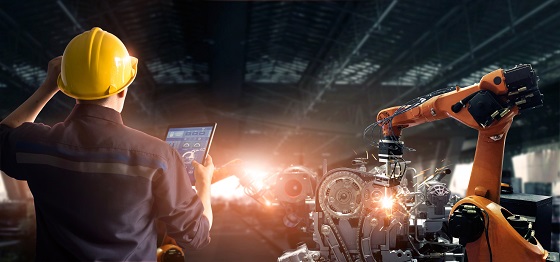The MIT Task Force on the Work of the Future, a multi-disciplinary initiative examining how emerging technologies are changing the nature of work, has released three research briefs focused on manufacturing. The briefs examine the adoption of new technologies by U.S. manufacturers as well as the development of new transformative manufacturing technologies: additive manufacturing (AM) and industrial robotics.
The authors explore several key questions including: What are the current motivations and barriers to adoption of new technologies by manufacturers, particularly small and medium-size firms, and how are skill requirements changing if at all for workers? What are the challenges and opportunities for the role of industrial robots in manufacturing? What is the value of AM and how do we build AM skills and capabilities within and across organizations? These briefs provide an in-depth perspective on some of the themes covered in the Task Force’s recently released final report, the culmination of a two-year research initiative.
The three research briefs include:
Manufacturing in America: A View from the Field
Author: Suzanne Berger, John M. Deutch Institute Professor, Department of Political Science and Member, MIT Task Force on the Work of the Future
The brief highlights findings from two years of research visiting factory floors across the U.S. Professor Berger and her team explored why, when and how firms acquire new technology and the implications for workers and skills. Having found relatively few new robots among small and medium-size firms, Berger puts forth policy recommendations that could help these companies acquire new technologies to increase their productivity and create good jobs.
Additive Manufacturing: Implications for Technological Change, Workforce Development, and the Product Lifecycle
Authors: Haden Quinlan, Program Manager, MIT Center for Additive and Digital Advanced Production Technologies. John Hart, Professor of Mechanical Engineering, Director of the MIT Center for Additive and Digital Advanced Production Technologies and Member, MIT Task Force Work of the Future
Additive manufacturing (AM), commonly known as 3D printing, is a cornerstone of a responsive, digitally driven production infrastructure. Though AM has been used for prototyping for decades, it is reaching an inflection point as a mainstream, serial production process. Adoption of AM is improving product development efficiency, manufacturing execution, and product performance. The brief explores the barriers to AM’s adoption and the need to address these challenges through policy changes. AM is not just a vector of future manufacturing competitiveness and supply chain efficiency, but a strategic asset for crisis response. For example, AM was instrumental in the ramp-up of COVID-19 testing efforts through the production of nasopharyngeal swabs in spring 2020. Training in AM should be part of a long-term strategy to increase the number of skilled manufacturing workers.
The State of Industrial Robotics: Emerging Technologies, Challenges, and Key Research Directions
Authors: Lindsay Sanneman, PhD candidate in the Department of Aeronautics and Astronautics at MIT and a member of the Interactive Robotics Group. Christopher Fourie, PhD candidate in the Department of Aeronautics and Astronautics at MIT and a member of the Interactive Robotics Group. Julie Shah, Associate Professor in the Department of Aeronautics and Astronautics at MIT and leads the Interactive Robotics Group of the Computer Science and Artificial Intelligence Laboratory, and Member, MIT Task Force on the Work of the Future.
The field of industrial robotics encompasses the study, design, and use of robot systems for manufacturing and how to integrate them into production lines. The field has been undergoing steady advancements in the past few decades and the brief describes the significant changes in the capabilities and design of industrial robotics. The brief details findings from interviews with robot manufacturers, original equipment manufacturers using robotics technologies, and industrial research institutions in Europe. It provides analysis about how to make robots safer, more adaptable, easier to use by less skilled workers, more responsive to the environment and the workers around them, more plugged into production cycles, and better integrated within manufacturing lines.

